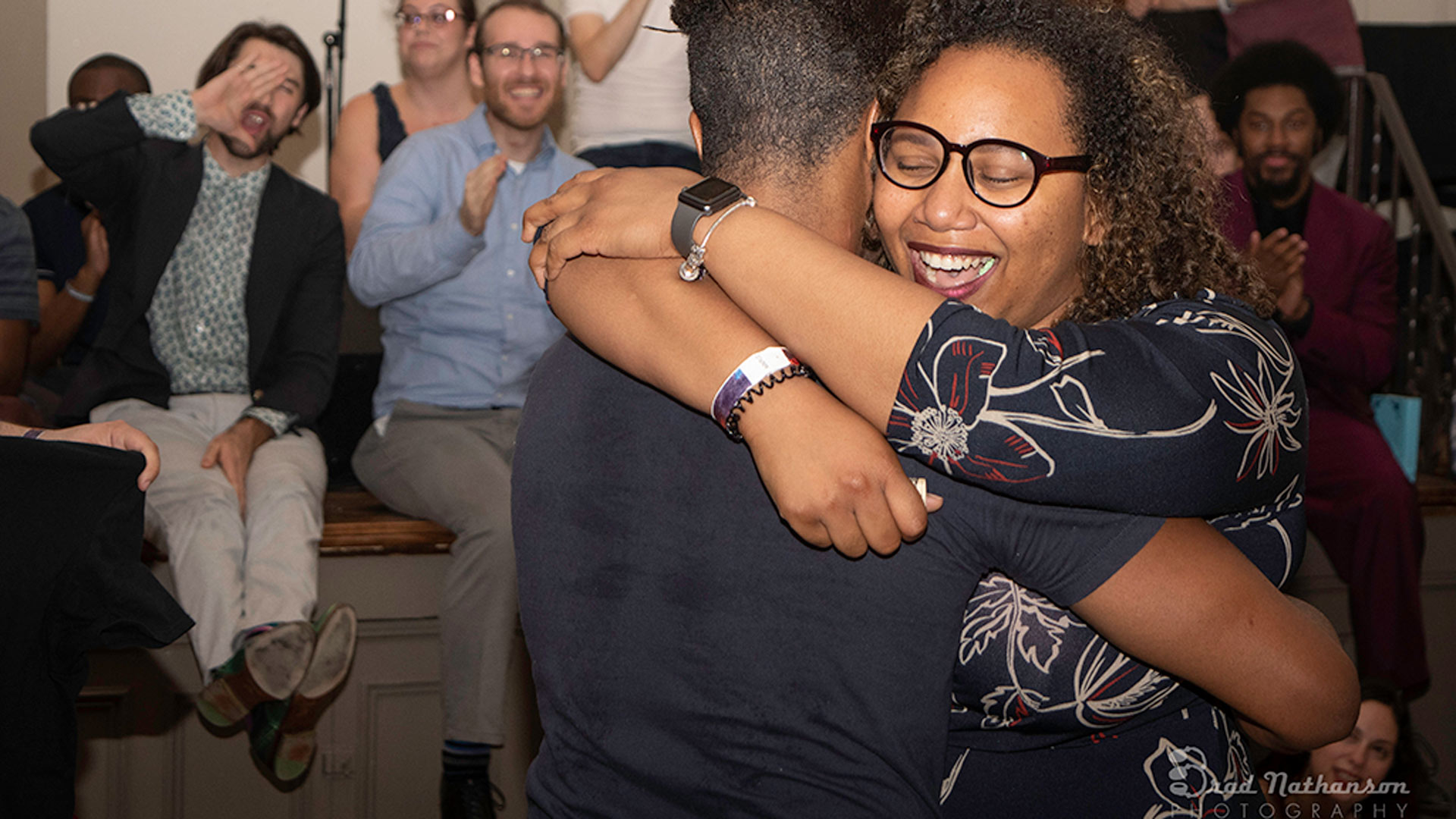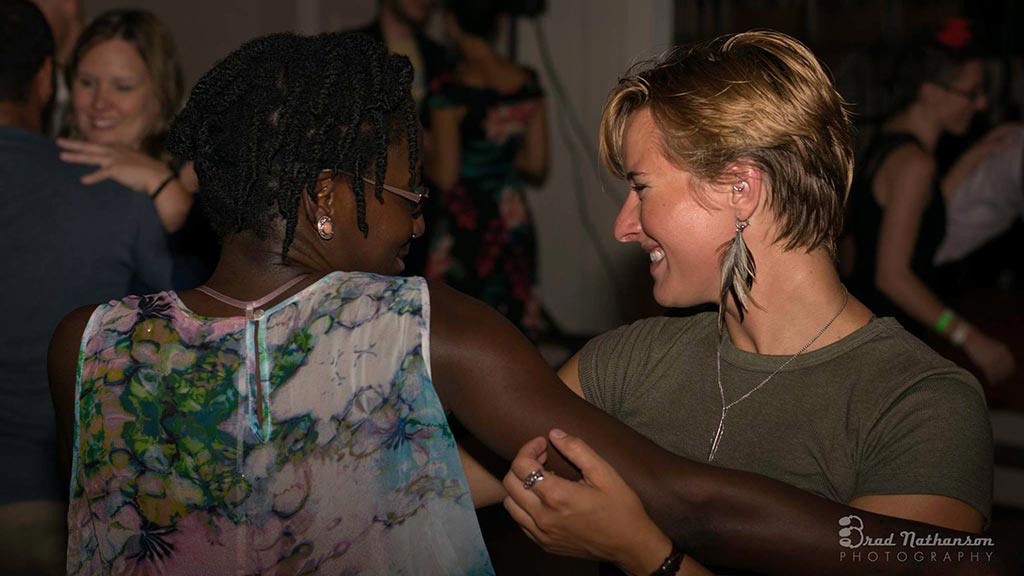
Styles
Blues Dance Styles
Often African Americans just danced, unconcerned with categorizing their moves. As people traveled the country, dance changed and evolved. Older traditions were largely undocumented, as a result of the marginalization of African Americans and the absence of modern recording technologies, but some dance styles are remembered.
Writing in the 1970s, African American jazz critic Albert Murray was the first to categorize these dances as “blues-idiom” and described them as spontaneous and improvisational.
These older styles that are now practiced by blues dancers are often grouped into two categories, Jukin' and Ballroomin'.
Slow Drag
Slow Drag is one of the earliest blues dance idioms, danced since the 1800s and popular throughout the country. It was—and continues to be—done both as a Ballroomin’ and Jukin’ style dance.
Explore the history of the Slow Drag in an article by Julie Brown, internationally known blues dance instructor.
A Landscape of Slow Drag by Julie BrownJukin' Blues Dance Idioms
Jukin’ Blues Dance Idioms refer to informal social dances, often done in small spaces such as juke joints, with minimal traveling around the floor. They were typically danced to the local style of blues music.
-
The Funky Butt
The Funky Butt is referenced in literature and music as early as the late 19th century. The dance involves interspersing side steps with extending the hips backward in a rocking motion, counter balancing the weight of the partner. It is typically done to funkier styles of blues music.
-
The Grind
The Grind is a dance done in place. The main movement is a step with a circular hip movement up and to the side.
-
Struttin'
Struttin’ developed in the Memphis area in the 1940s and 1950s is danced to faster Delta blues music. An inward leaning embrace between partners allows a large amount of space for fancy syncopated footwork.
-
Piedmont
Piedmont is danced to the finger picking style of Piedmont blues music originating in the 1920s in the rural areas of the Piedmont plateau that runs between the Atlantic coast and the Appalachian Mountains from Alabama to New York. The basic step is a relaxed but fast shuffling triple step.
-
Texas Shuffle
Texas Shuffle is danced to a style of West Coast blues music played by Texas musicians in California. The style involves a sliding and shuffling motion with a subtle triple pulse throughout. Dancers alternate between stretch and compression to implement turns and other moves.
-
Chicago Triple
Chicago Triple was created in Chicago to the more electrified Chicago Blues with a shuffle rhythm. Dancers articulate the triple as the basic step, from which they diverge and return.
Ballroomin’ Blues Dance Idioms
Ballroomin’ Blues Dance Idioms includes blues dance styles done in more formal places such as ballrooms especially to 1920s blues and jazz music. Dancers would typically move counter clockwise around the dance floor.
-
Savoy Walk
Savoy Walk was danced to slow jazz-blues music. In close embrace, dancers move with a slow-quick- quick step pattern, interspersed with sudden creative and flashy turns or other embellishments that temporarily disrupt the step pattern.
A Brief Introduction to Savoy Walk by Damon Stone -
The Strut
The Strut often favored New Orleans style jazz blues. Dancers walk in close embrace with a showy rolling motion of the upper torso with intermittent flowing turns and spins as they move around the floor.
-
The Stride
The Stride involved early jazzy blues music. Dancers in close embrace elegantly walk across the floor with forward driving long reaching steps.

Leah Hill and Paula Sharp Blues Dancing, Southbound Blues Exchange, Nashville, Tennessee, 2018. By Brad Nathanson.